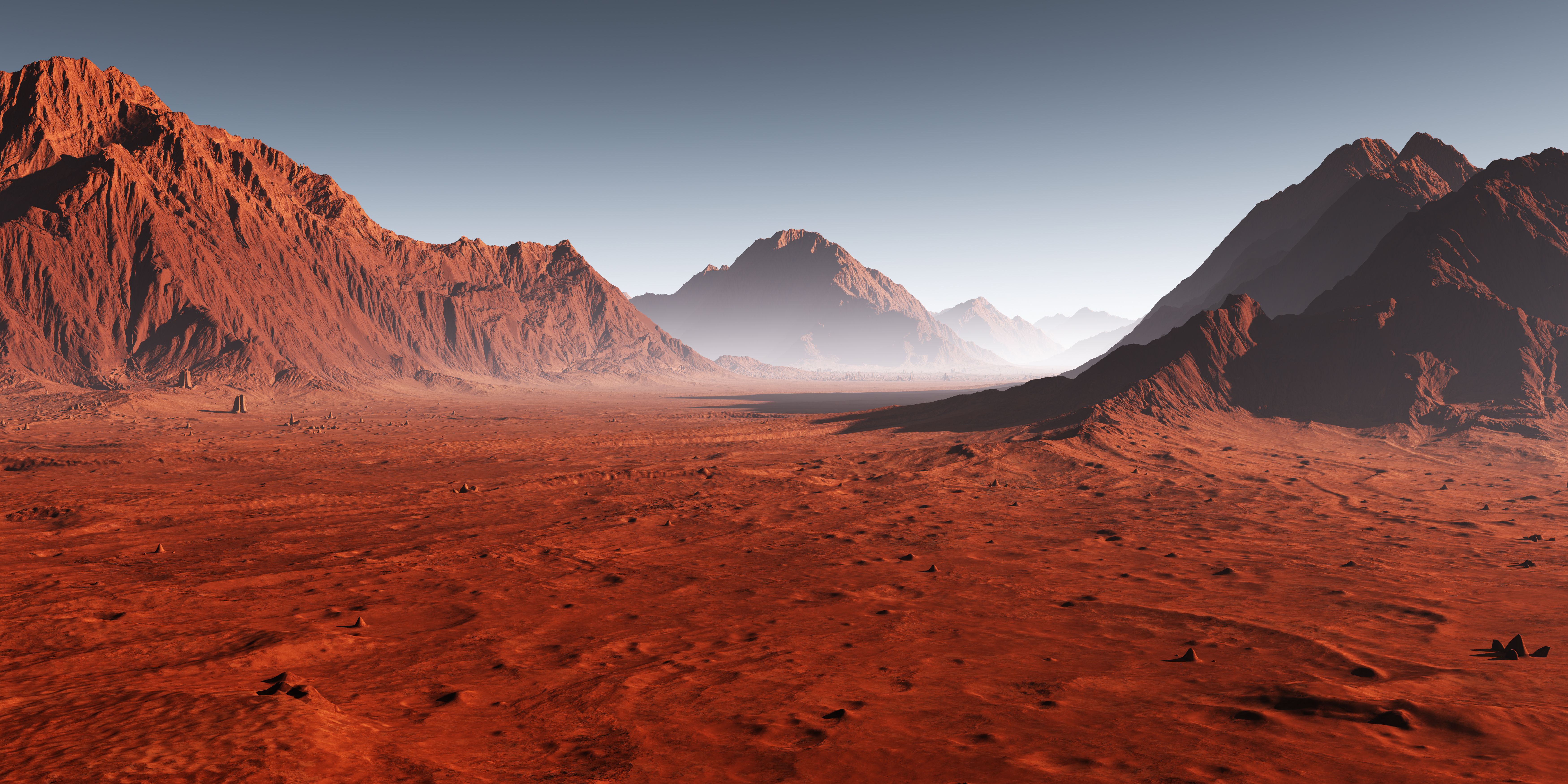Advancements in LIBS Technology Enable Sensitive Nitrogen Detection for Mars Exploration
Researchers have developed an advanced method using laser-induced breakdown spectroscopy (LIBS) for sensitive and accurate detection of nitrogen in simulated Martian soil.
Space exploration is a growing industry. Investigating what lies outside of Earth’s boundaries has numerous implications for the future of human society. Currently, many scientists and astronauts are studying the planet Mars, particularly the composition of Martian soil and its atmosphere. In a recent study published in Spectrochimica Acta Part B: Atomic Spectroscopy, researchers used laser-induced breakdown spectroscopy (LIBS) to accurately determine nitrogen in simulated Martian soil (1). The significance of this study is that the detection of nitrogen on Mars is crucial to finding signs that humans can live on the planet.
Sunset on Mars, dust obscured Martian landscape. 3D illustration | Image Credit: © Peter Jurik - stock.adobe.com

Nitrogen plays a vital role in the emergence and development of life, making it an essential target for Mars exploration missions seeking to investigate habitability and search for potential life indicators. The Mars Science Laboratory Curiosity rover, equipped with a gas chromatography–mass spectrometer (GC–MS) instrument, has already revealed the presence of oxidized nitrogen-bearing compounds on the Martian surface, with equivalent nitrogen concentrations up to 0.01 wt% (1). However, the current performance of LIBS for nitrogen analysis on the rover does not meet the desired limits of detection (LOD) and accuracy (1).
The research team addressed the need for an improved method by conducting laboratory experiments to guide advancements in the LIBS instrument on the Mars rover and data treatment techniques. They focused on the challenges of sensitivity and matrix effects in LIBS determination of nitrogen, particularly considering its various chemical speciation in geological materials.
The researchers employed a double-detection experimental configuration using a narrow-bandwidth Czerny-Turner (CT) spectrometer and a broad-bandwidth Echelle spectrometer (1). Using this setup allowed the research team to use the CT spectrometer to detect nitrogen emission lines while the Echelle spectrometer detected the emission lines from the major elements in the sample under scrutiny (1). By fusing the spectra together, the researchers established a neural network that allowed for effective multivariate regression (1).
To address the diverse chemical speciation of nitrogen in the samples, a generalized spectrum was utilized for training regression models. An unsupervised clustering technique assigned a type label to each training spectrum, improving the treatment of different nitrogen forms. The trained model was then tested with independent samples, demonstrating a limit of detection (LOD) of 0.18 wt% and a root mean square error of prediction (RMSEP) of 0.041 wt% (1). These results indicate that LIBS could be used to spur advancements in nitrogen detection. In turn, this can contribute to the future exploration of Mars.
The sensitive and accurate determination of nitrogen through LIBS technology brings scientists closer to uncovering potential signs of habitability and life on the Martian surface. By improving the detection capabilities of LIBS, researchers enhance their ability to analyze Martian soil samples and further understand the planet's geological and potentially biological history.
Reference
(1) Zhang, B.; Sun, C.; Yu, X.; Chen, F.; Wang, L.; Rao, Y.; Sun, T. Zhao, Y.-Y. S.; Yu, J. Sensitive and accurate determination of nitrogen in simulated Martian soil and environment with LIBS spectrum fusion and regression based on neural network. Spectrochimica Acta Part B: At. Spectrosc. 2023, 206, 106708. DOI: 10.1016/j.sab.2023.106708
Laser Ablation Molecular Isotopic Spectrometry: A New Dimension of LIBS
July 5th 2012Part of a new podcast series presented in collaboration with the Federation of Analytical Chemistry and Spectroscopy Societies (FACSS), in connection with SciX 2012 — the Great Scientific Exchange, the North American conference (39th Annual) of FACSS.